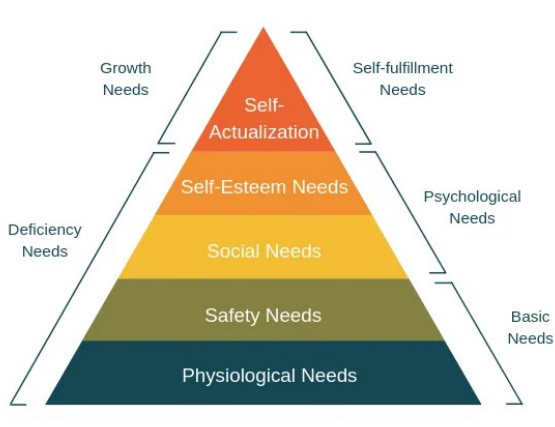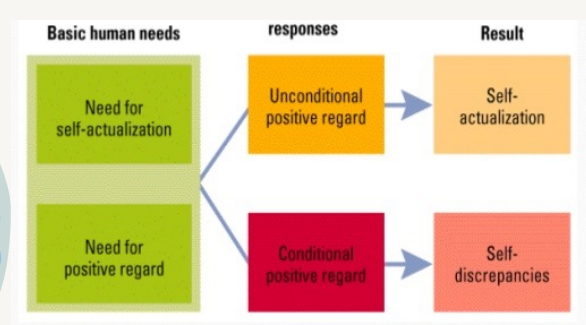Psychosocial Theories in PT setting
1/99
There's no tags or description
Looks like no tags are added yet.
Name | Mastery | Learn | Test | Matching | Spaced |
|---|
No study sessions yet.
100 Terms
Personality
● Consistent behavior patterns and intrapersonal processes within the individual
● affect, behavior and cognition (ABC)
Mask or public self
Personality came from a Latin word “Persona” which means
trait
● considered to be something that is part of an individuals personality
● a long term characteristic of an individual that shows through their behaviour, actions and feelings.
state
is a temporary condition that they are experiencing for a short period of time
PSYCHOANALYTIC THEORY
• All human behavior is caused and can be explained (deterministic theory).
Freud
believed that repressed (driven from conscious awareness) sexual impulses and desires motivate much human behavior.
> Childhood trauma
> Failure to complete tasks of psychosexual development
> Unmet needs and sexual feelings
> Traumatic events
> Hysterical or neurotic behaviors resulted from unresolved conflicts
Factors in Psychoanalytic theory
Psychosexual development
Freud believed that adult personality problems were the result of early experiences in life
the core of human experience
In the psychoanalytical school, Sigmund Freud’s construction of self and personality makes the physical body ______
Oral stage
Birth to 1 year
Errogenous zone: Mouth
Anal stage
1 to 3 year
Errogenous zone: Bowel and bladder control
Phallic year
3 to 6 year
Errogenous zone: Genitals
Latent stage
6 to puberty
Libido inactive
Oral fixations
Smoking, gum-chewing, nail-biting
Anal fixation
Orderliness, obsessiveness, rigidity
Phallic fixations
vanity, exhibitionism, pride
Ego
“Maybe we can compromise”
> At the conscious level
> Exercutive mediating between Id impulses and superego inhibitions; testing reality; rational, operates mainly at conscious level but also at preconscious level
Superego
> Preconscious level
> Ideals and morals; striving for perfection; incorporated from parents; become a person’s conscience. Operates mostly at preconscious level
Id
> Unconscious level
> Basic impulses (sex and aggression); seeking immediate gratification; irrational and impulsive. Operates at unconscious level
to balance the aggressive/pleasure-seeking drives of the id with the moral control of the superego
What is the job of the ego?
Anxiety
Weak ego will lead to ______
Defense mechanisms
To protect ego from anxiety, we use _________
> Thoughts
> Perceptions
Conscious levels
> Memories
> Stored knowledge
Preconscious levels
> Fears
> Violent motives
> Unacceptable sexual desires
> Immoral urges
> Irrational wishes
> Selfish needs
> Shameful experiences
Unconscious level
Libido or sex drive
All pleasurable activity is traceable to the sexual drive. Sex can take many forms including:
> Narcissism
> Love
> Sadism
> Masochism
Thanatos or aggession/Destructive drive
Aggression is flexible and can take a number of forms, such as teasing, gossip, sarcasm, humiliation, humor, and the enjoyment of other people’s suffering
Neurotic anxiety
Fear that id will overpower ego
Moral anxiety
> Fear of actions or thoughts contrary to superego
> May result from the failure to behave consistently with what they regard as morally right, or from sexual temptations if a child believes that yielding to the temptation would be normally wrong
Realistic anxiety
> It is defined as an unpleasant, nonspecific feeling involving a possible danger
Sublimation
> Suppression of unwanted impulses by substituting it with a creative cultural accomplishments
Displacement
> redirecting unacceptable urges to less threatening people or objects
Repression
When the ego is threatened, it unconsciously forgets or block unpleasant feelings
Regression
> the ego may revert back to an earlier stage during times of stress or anxiety
Projection
> attributing the unwanted impulse to another person
Defense mechanisms or coping styles
Are automatic psychological process that protect the individual against anxiety and from the awareness of internal or external dangers or stressors. Individuals are often unaware of these processes as they operate
High adapative level
> anticipation
> affiliation
> altruism
> humor
> self-assertion
> self-observation
> sublimation
> suppression
Mental inhibition level
> displacement
> dissociation
> intellectualization
> isolation of affect
> reaction formation
> repression
> undoing
Minor damage - distorting level
> Devaluation
> Idealization
> Omnipotence
Disavowal level
> denial
> projection
> rationalization
action level
> acting out
> apathetic withdrawal
> help - rejecting complaining
Defensive dysregulation
> delusional projection
> psychotic denial
> psychotic delusion
Trust vs mistrust
> infant
> hope
> viewing the world as safe and reliable; relationships as nurturing, stable, and dependable
> realistic trust of self and others, confidence in others
Autonomy versus shame and doubt
> toddler
> will
> achieving a sense of control and free will
> self-control and willpower
Initiative versus guilt
> school age
> competence
> beginning development of a conscience; learning to manage conflict and anxiety
> curiosity and exploration
Industry vs inferiority
> school age
> competence
> emerging confidence in own abilies; taking pleasure in accomplishments
Identity vs role confusion
> adolescence
> fidelity
> formulating a sense of self and belonging
Intimacy vs isolation
> young adult
> love
> forming adult, loving relationships, and meaningful attachments to others
Generativity vs stagnation
> middle adult
> care
> being creative and productive; establishing the next generation
ego integrity vs despair
> maturity
> wisdom
> accepting responsibility for oneself and life
piaget’s cognitive development
> human intelligence progresses through a series of stages based on age
> biologic changes and maturation were responsible for cognitive development
kohlberg’s moral development
theory that focuses on how children develop morality and moral reasoning
attachment theory
> primary caregivers who are available and responsible to an infant’s needs allow the child to develop a sense of security
> the infant knows that the caregiver is dependable, which creates a secure base for the child to then explore the world
Proximity
essence of attachment is ________
Pre-attachment
> birth to 6 weeks
> baby shows no particular attachment to specific caregiver
Indiscriminate
> 6 wks to 7 mo
> infant begins to show preference for primary and secondary caregivers
Discriminate
> 7+ mo
> infant shows strong attachment to one specific caregiver
Multiple
> 10+ mo
> growing bonds with other caregivers
secure attachment
greet parents with positive emotions
ambivalent attachment
wary of strangers
avoidant attachment
may avoid parents
disordered attachment
confusion or apprehension
behaviorism
• Observable behaviors and what one can do externally to bring about behavior changes
• Behaviorists believe that behavior can be changed through a system of rewards and punishments
Classical conditioning
> a neutral stimulus is associated with a natural response
> associate an involuntary response and a stimulus
Operant conditioning
> A response is increased or decreased due to reinforcement or punishment
> associate a voluntary behavior and a consequence
Observational learning
Learning occurs through observation and imitation of others
generalization
conditioned response is transferred from one stimulus to another
DISCRIMINATION
recognizing and responding to differences between similar stimul
EXTINCTION
conditioned response gradually weakens and disappears when the conditioned stimulus is constantly repeated without the unconditioned stimulus
SPONTANEOUS RECOVERY
responding after a prolonged rest period after extinction
continuous reinforcement
> desired behavior is reinforced every time it occurs
> most effective when teaching a new behavior
> creates a strong association between behavior and a response
Partial reinforcement
> most effective once a behavior has been established
> new behavior is less likely to disappear
> various partial reinforcement schedules available to suit individual needs
Fixed-interval schedule
an exact amount of time passes between each reinforcement
Variable-interval schedule
a varying amount of time passes between each reinforcement
fixed-ratio schedule
reinforcement occurs after a fixed number of responses
variable-ratio schedule
reinforcement occurs after a varying number of responses
The ABC Model
helps identify what triggers behaviors exactly what the behaviors are, and their consequences
Activating event
anything that happens to the person, any situation you encounter, circumstances, your own thoughts
beliefs
what we think about the situation things (rational and irrational, specific and generalized)
consequences
result of our belief about the situation, how we feel, or what we do because of our beliefs
behavior
is defined by the way in which people act towards others
consequences
are what happens once the behavior has occurred. Can either increase or reduce the likelihood of the behavior happening again
triadic reciprocal causation
social learning theory approaches the explanation of human behavior in terms of a continuous reciprocal interaction between cognitive, behavioral, and environmental determinants
humanistic theories
a significant shift away from the psychoanalytic view of the individual
> neurotic
> impulse-driven person with repressed psychic problems
> away from the focus on and examination of the client’s past experiences.
Humanism
> focuses on a person’s positive qualities, his or her capacity to change (human potential), and the promotion of self-esteem
> do consider the person’s past experiences, but they direct more attention toward the present and future.
Maslow’s Hierarchy of needs

Person-centered theory

existence
> means to emerge or to become;
> suggests process;
> is associated with growth and change;
ESSENCE
> implies a static immutable substance.
> refers to a product
> signifies stagnation and finality
existentialism
> opposes the split between subject and object.
> hold that ultimately each of us is responsible for who we are and what we become
> are basically antitheoretical.
Dasein
- to exist in the world
- the basic unity of person and environment
Umwelt, or the environment around us;
Mitwelt, or our relations with other people;
Eigenwelt, or our relationship with our self.
People experience three simultaneous modes in their being-in-the-world:
Nonbeing
Being-in-the-world necessitates an awareness of self as a living, emerging being. This awareness, in turn, leads to the dread of not being: that is,
ANXIETY
May (1958a) defined ______ as “the subjective state of the individual’s becoming aware that his [or her] existence can be destroyed, that he can become ‘nothing’” The acquisition of freedom inevitably leads to _____, which can be either pleasurable and constructive or painful and destructive.
Normal Anxiety
- Is proportionate to the threat
- Does not involve repression, and can be handled on a conscious level
- Growth produces normal anxiety
Neurotic Anxiety
- Reaction that is disproportionate to the threat
- Leads to repression and defensive behaviours
- Felt whenever one’s values are transformed into dogma
- Neurotic anxiety blocks growth and productive action
FREEDOM
> comes from an understanding of our destiny.
> is the possibility of changing, although we may not know what those changes might be.
> “entails being able to harbour different possibilities in one’s mind even though it is not clear at the moment which way one must act”.
Essential freedom
Freedom of Being or Inner Freedom
existential freedom
Freedom of Doing or Freedom of Action